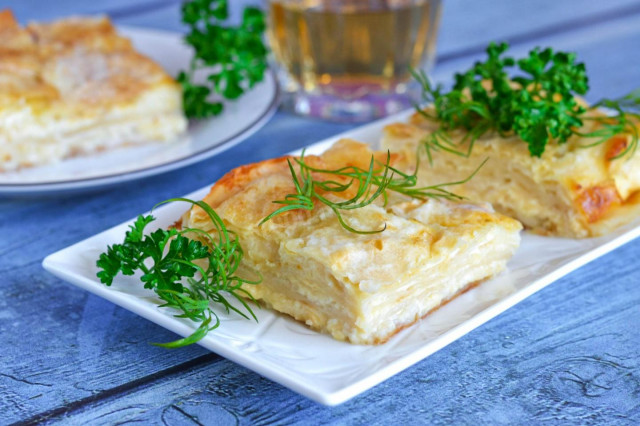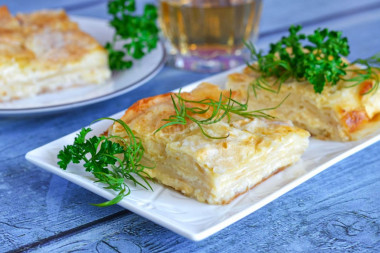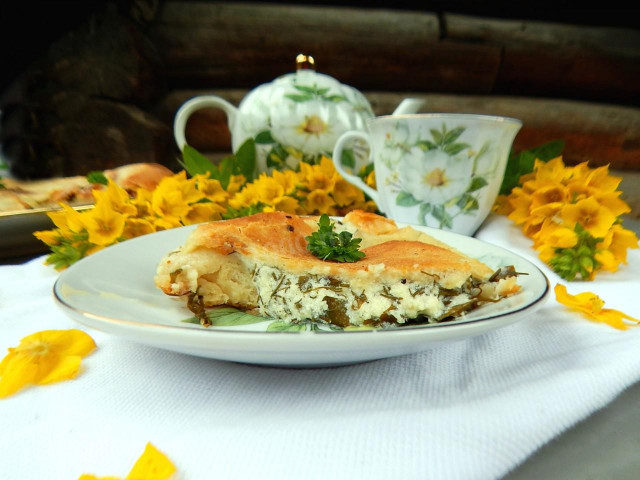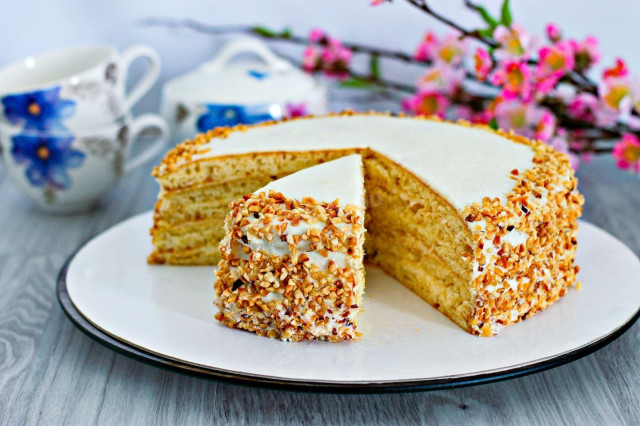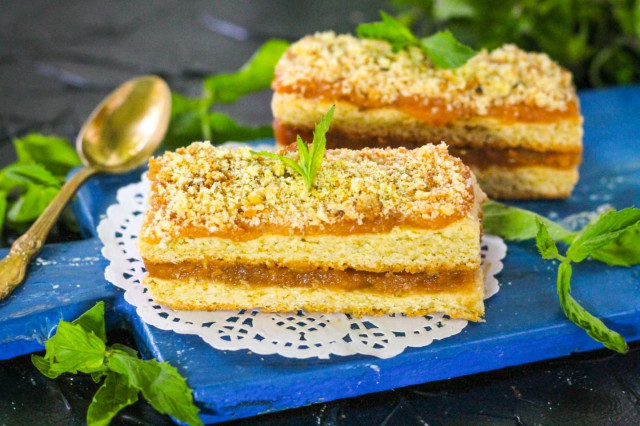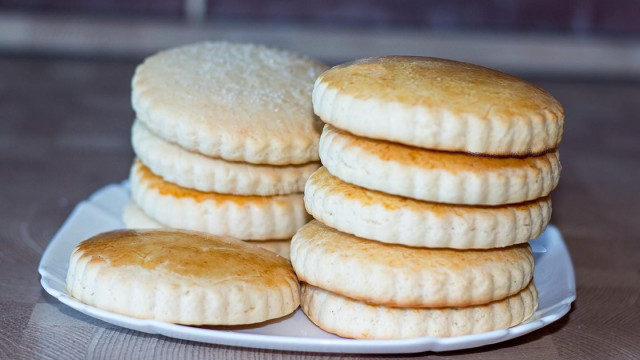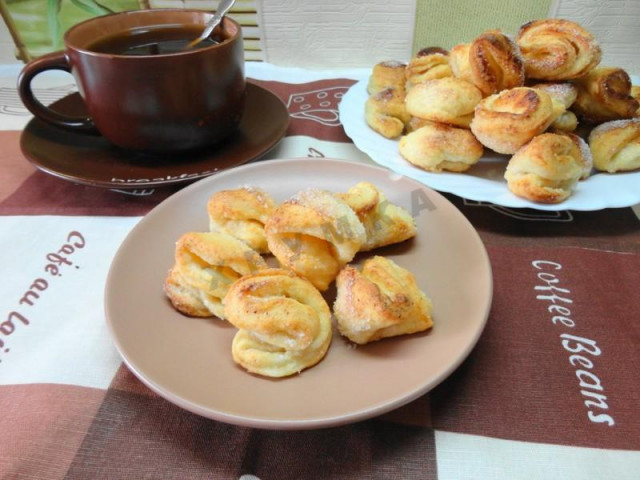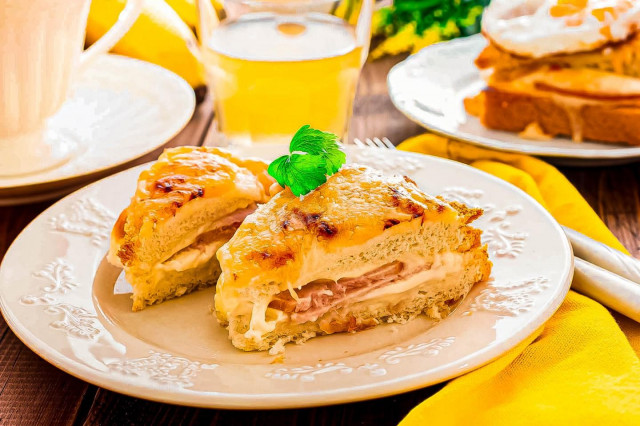Composition / ingredients
Step-by-step cooking
Step 1:
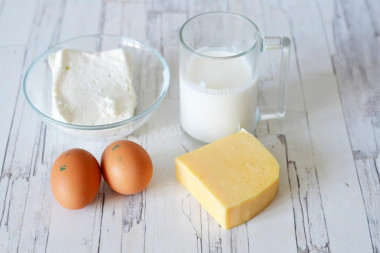
How to make a lazy achma from lavash? Prepare all the necessary ingredients for the filling. Any cheese will do, as long as it is natural and of high quality. In the classic achma, in addition to the usual cheese, suluguni is also used, but we do not have a classic recipe, but a simplified variation of it, so instead of suluguni we use cottage cheese.
Step 2:
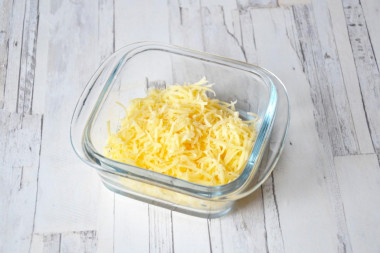
Grate the cheese on a coarse grater.
Step 3:
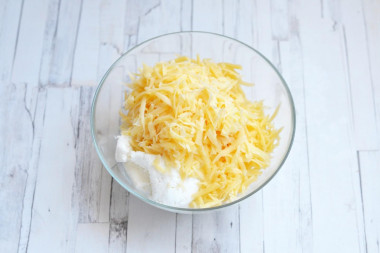
In a bowl, combine the cheese and cottage cheese. Cottage cheese can be used of any fat content and even fat-free. If the cottage cheese is lumpy, then it is better to rub it through a sieve or mash it with a fork. I usually use cottage cheese in briquettes — it is quite moist and without lumps.
Step 4:
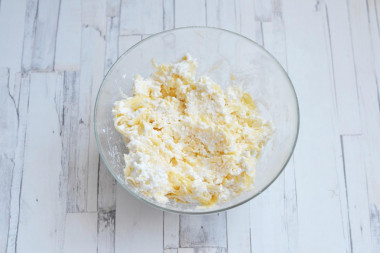
Mix everything thoroughly. The softer and more pliable the cottage cheese, the more tender the filling will turn out.
Step 5:
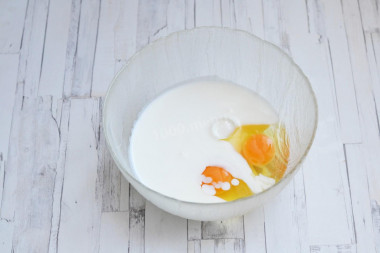
In a separate bowl, combine kefir at room temperature and eggs. Instead of kefir, you can use yogurt and even fermented baked milk. Any fat content will do.
Step 6:
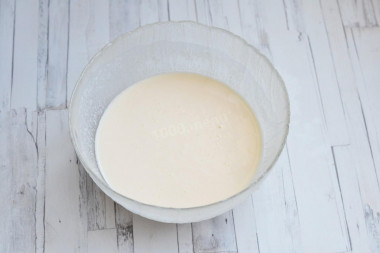
Beat the mixture with a mixer until smooth.
Step 7:
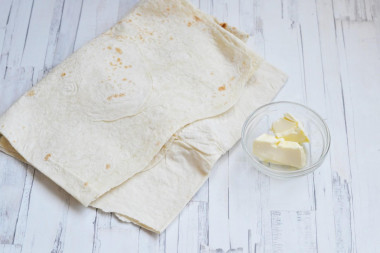
Prepare the necessary ingredients for the cake. Lavash is better to use a long rectangular one — it is easy to give it any desired shape. First, it is better to prepare the filling, and leave the pita bread for later, since it dries quickly enough as soon as the sealed package is opened.
Step 8:
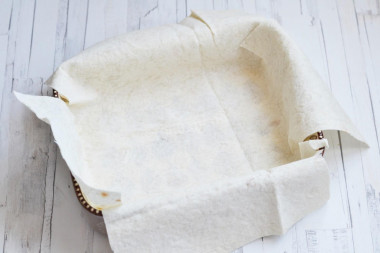
Grease a rectangular baking dish (my size is 24 * 18 cm) with butter, put one sheet of pita bread in it so that its edges hang outwards. You can use any shape — rectangular, round, square. Depending on the size of the shape, the achma will turn out thinner or, conversely, thicker.
Step 9:
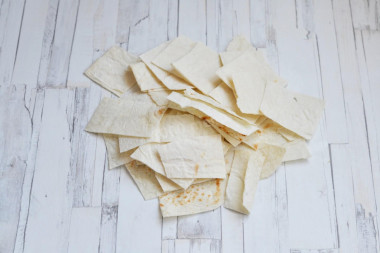
From the second lavash, cut out a rectangle (or another shape, depending on your shape) equal to the size of the shape. It will be the top of the pie while you set it aside. Cut the remains of the second lavash into small pieces. Divide the resulting pieces into 3 parts.
Step 10:
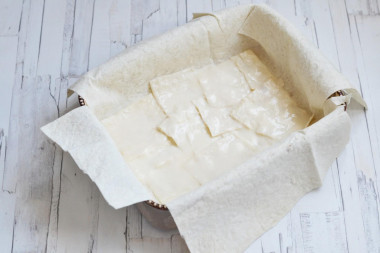
Dip the first third of the pieces of pita bread in the kefir-egg mixture and lay them overlap in the mold on the pita bread in one layer.
Step 11:
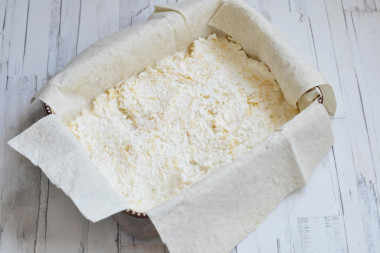
Spread half of the cheese-curd filling evenly on top.
Step 12:
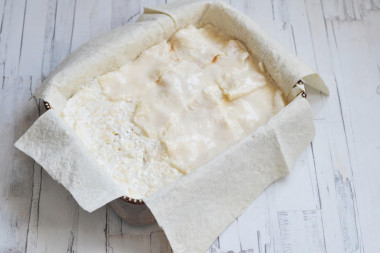
Repeat the layers of pita bread pieces soaked in kefir and cottage cheese filling again. Put the rest of the pita bread pieces on top of the filling.
Step 13:
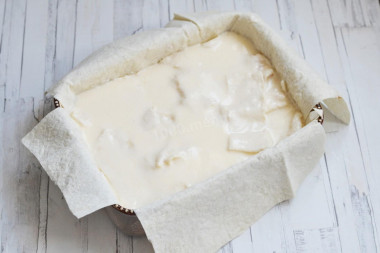
Pour the kefir-egg mixture on top of the pie, leaving 3-4 tablespoons to fill the top. Cover everything with the hanging edges of the pita bread and pour over the remnants of the kefir-egg mixture.
Step 14:
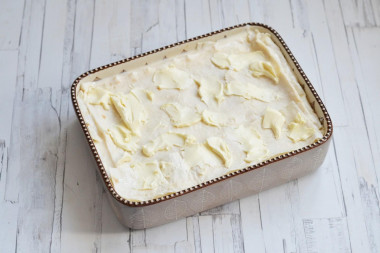
Cover the pie with the remaining pita bread sheet. Spread the pieces of butter on top. Put the achma in a preheated 180 ° C oven for 40-45 minutes. The exact time depends on the characteristics of your oven. The top of the achma should be browned. The achma itself can greatly swell during baking. But it will settle as it cools down.
Step 15:
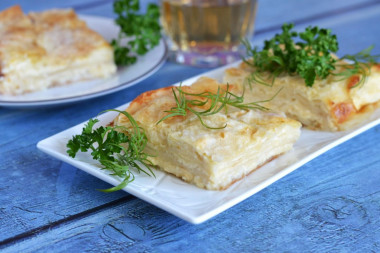
Transfer the finished achma from the mold to a dish, cool slightly and cut into pieces. It can be served both hot and completely cold. Enjoy your meal!
Be sure to wash the eggs before use, as even the seemingly clean shell may contain harmful bacteria. It is best to use food detergents and a brush.
Any cheese is suitable for this dish — hard, semi-hard, soft, like mozzarella. The main thing is that it is tasty, high-quality, without milk fat substitutes and melts well.
How to choose the right pita bread? First of all, look at the date of manufacture on the package. Do not take expired pastries. Fresh pita bread should have a pleasant smell. Take a good look so that there are no stains and signs of mold on it.
Caloric content of the products possible in the composition of the dish
- Chicken egg - 157 kcal/100g
- Egg white - 45 kcal/100g
- Egg powder - 542 kcal/100g
- Egg yolk - 352 kcal/100g
- Ostrich egg - 118 kcal/100g
- Cottage cheese of 40% fat content - 466 kcal/100g
- Cottage cheese of 20% fat content - 233 kcal/100g
- Cottage cheese of 18% fat content - 226 kcal/100g
- Cottage cheese of 10% fat content - 156 kcal/100g
- Low-fat cottage cheese - 75 kcal/100g
- Cottage cheese with sour cream - 260 kcal/100g
- Fruit cottage cheese - 147 kcal/100g
- Soft dietary cottage cheese - 170 kcal/100g
- Vitalinia cottage cheese - 64 kcal/100g
- Cottage cheese "morning" ( "danone") without sugar - 91 kcal/100g
- Cottage cheese - 156 kcal/100g
- Dutch cheese - 352 kcal/100g
- Swiss cheese - 335 kcal/100g
- Russian cheese - 366 kcal/100g
- Kostroma cheese - 345 kcal/100g
- Yaroslavsky cheese - 361 kcal/100g
- Altai cheese 50% fat content - 356 kcal/100g
- Soviet cheese - 400 kcal/100g
- Cheese "steppe" - 362 kcal/100g
- Uglich cheese - 347 kcal/100g
- Poshekhonsky cheese - 350 kcal/100g
- Lambert cheese - 377 kcal/100g
- Appnzeller cheese with 50% fat content - 400 kcal/100g
- Chester cheese with 50% fat content - 363 kcal/100g
- Edamer cheese with 40% fat content - 340 kcal/100g
- Cheese with mushrooms of 50% fat content - 395 kcal/100g
- Emmental cheese with 45% fat content - 420 kcal/100g
- Gouda cheese with 45% fat content - 356 kcal/100g
- Aiadeus cheese - 364 kcal/100g
- Dom blanc cheese (semi-hard) - 360 kcal/100g
- Lo spalmino cheese - 61 kcal/100g
- Cheese "etorki" (sheep, hard) - 401 kcal/100g
- White cheese - 100 kcal/100g
- Fat yellow cheese - 260 kcal/100g
- Altai cheese - 355 kcal/100g
- Kaunas cheese - 355 kcal/100g
- Latvian cheese - 316 kcal/100g
- Limburger cheese - 327 kcal/100g
- Lithuanian cheese - 250 kcal/100g
- Lake cheese - 350 kcal/100g
- Gruyere cheese - 396 kcal/100g
- Kefir fat - 62 kcal/100g
- Kefir of 1% fat content - 38 kcal/100g
- Low-fat kefir - 30 kcal/100g
- Kefir "doctor beefy" 1,8% fat content - 45 kcal/100g
- Kefir 2.5% fat content - 53 kcal/100g
- Butter 82% - 734 kcal/100g
- Amateur unsalted butter - 709 kcal/100g
- Unsalted peasant butter - 661 kcal/100g
- Peasant salted butter - 652 kcal/100g
- Melted butter - 869 kcal/100g
- Armenian lavash - 236 kcal/100g
- Lavash - 277 kcal/100g

